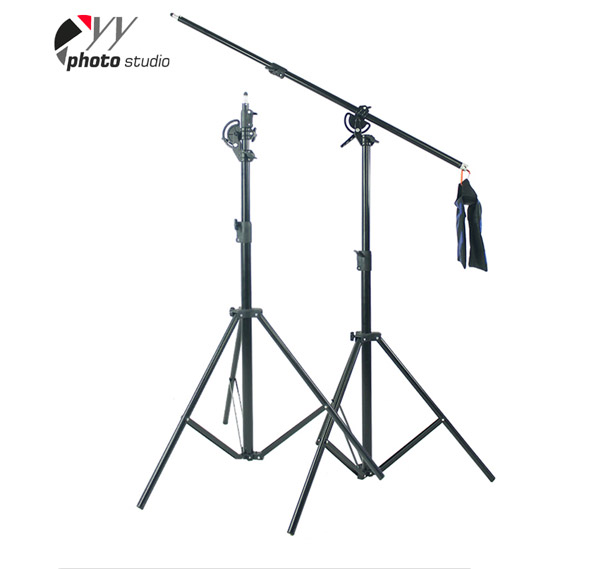
How to choose a Light Stand?
The stability of Light Stand:
The first element in choosing a tripod is stability. If the tripod is too light or the manufacturing process of the connecting parts such as the lock is not good, it will cause the overall frame to shake loose, which will not be able to stabilize the camera. However, the weight of digital cameras is generally less than 400g, so the bearing weight of the tripod is mainly in the lens aspect. First, check your camera and lens. If you are buying the first tripod, consider the longest lens, or the longest lens you have in store. Take it and your camera to the equipment store, install the tripod, and see if the longest lens on the frame is stable. If it has a shaky feel, it is clearly not qualified. Many users are torn between the weight and stability of a tripod. Frequent travel photographers can only accept compromise, that is to maximize the balance between the two. Many professional photographers have a knack for adding weight to their tripods by hanging heavy objects wherever they can find them. To do this, they attached a small bag filled with rocks or sand to the camera bag and attached it to the lower end of the tripod's central pillar. By adding weight to the center of gravity, they reduced the wobble of the tripod.
Manner of Light Stand:
First, Light Stand Supplier shares that consider not only the firmness and weight of the tripod, but also how many sections are the tripod made of? How to adjust? Is it reinforced with diagonal bracing when opened? The performance of the central column should also be considered. These factors determine whether the tripod is prone to the aforementioned shaking, but also affect the convenience of operation. Unfortunately, many tripod manufacturers seem to ignore the tripod feel. Three different methods can be used to support the tripod to its working height: locking the rotating casing; Fix with fastening screw; Use your thumb to lock zhi. However, the way a tripod is fixed, as chosen by the manufacturer, does not necessarily fully reflect whether a tripod is effective or not. Clamping the tripod is not always as effective as screwing it. It depends on how easy the tripod is to use in the wild.

In the case of a tripod fixed by tightening, if the relevant knob is not large enough or inconvenient to screw up, the tripod will be laborious to put away afterwards. Given that the knobs are positioned vertically (that is, horizontally), some users have trouble remembering which way to rotate. For example, few manufacturers bother to mark the location of knobs with arrows. Many people turn the knob in the wrong direction, so tightly that they cannot loosen it without the aid of a tool. If the knobs are placed horizontally, the user will have no trouble tightening them, because he instinctively tightens them the way he turns off the faucet.
The axis of the Light Stand:
In fact, how to pull out and fix the tripod shaft, may be a well-worn problem. In this case, the most correct and positive approach is to fix the central column with a diagonal brace operated by the crank arm. In the case of the lighter tripod that travelers often use, simply release the clip, raise the tripod to the appropriate height, and then re-clamp the tripod. If the locking device is located on the inside of one of the legs, the user will struggle between the three legs of the tripod to find the device, which is inconvenient.
A better solution is to use a casing device above the shoulders of the tripod. The tripod, which lacks a friction locking device to prevent the central column from sliding suddenly when the clamping device is released, has a safety hazard. More responsible tripod manufacturers choose production has to be fixed to cant rack and pinion gear center column, as a result, loosen locking device, even if also can maintain the original height, combined with the wave of the crank arm may be able to at any time convenient to adjust the height, this kind of tripod degree of friction in not to interfere with the case of the locking device. The central column of some tripods can be rotated out, taken out completely and placed upside down for close-up or as a monopod. It would be more practical to have a bubble level attached to the central column, as such a column would align the horizon more accurately on uneven ground. If the leg length adjustment device is located "above", i.e. near the shoulder of the tripod, the user can adjust the leg length without bending down too often.
The stability of Light Stand:
Finally, keeping the tripod stable is at odds with reducing its weight. Photographers who travel a lot can only accept compromise, which maximizes the balance between the two. Many professional photographers have a knack for adding weight to their tripods by hanging heavy objects wherever they can find them. To do this, they attached a small bag filled with rocks or sand to the camera bag and attached it to the lower end of the tripod's central pillar. By adding weight to the center of gravity, they reduced the sway of the tripod.